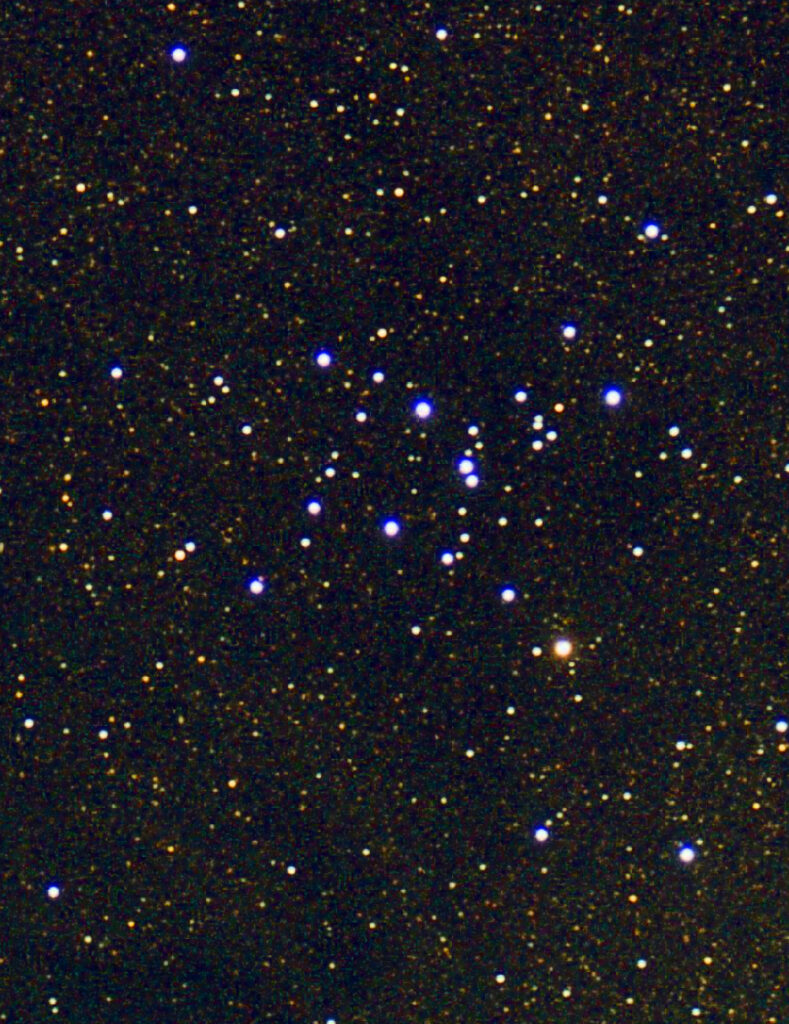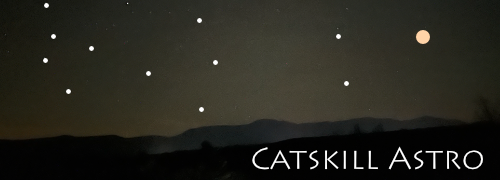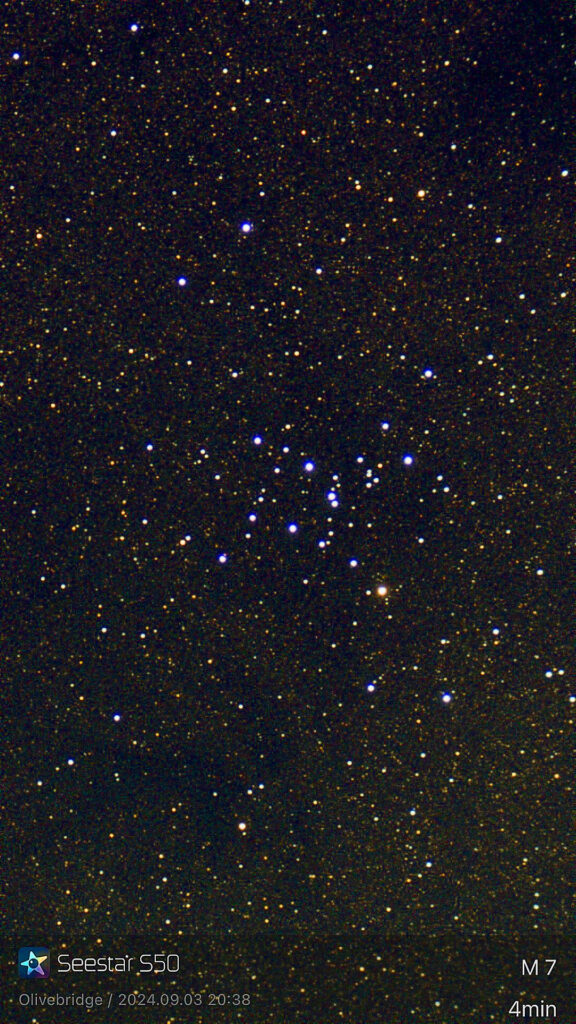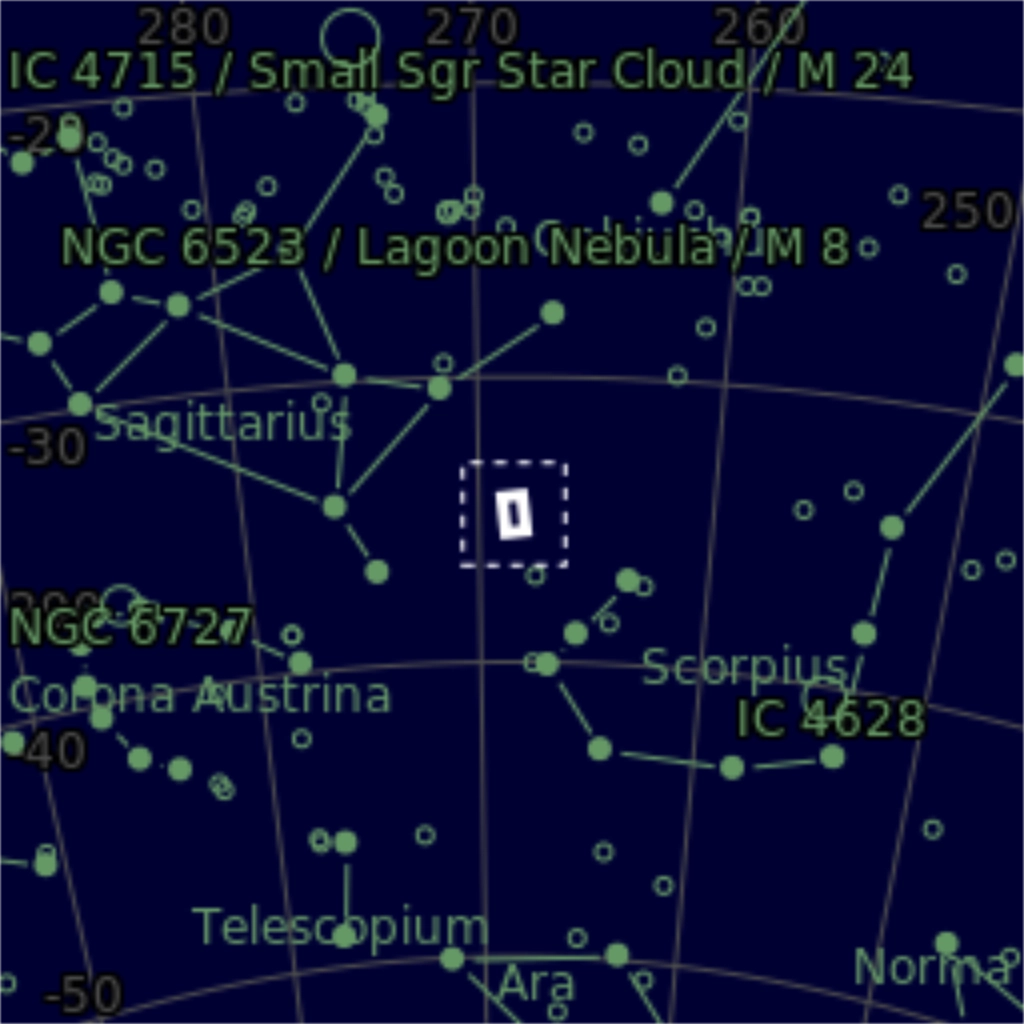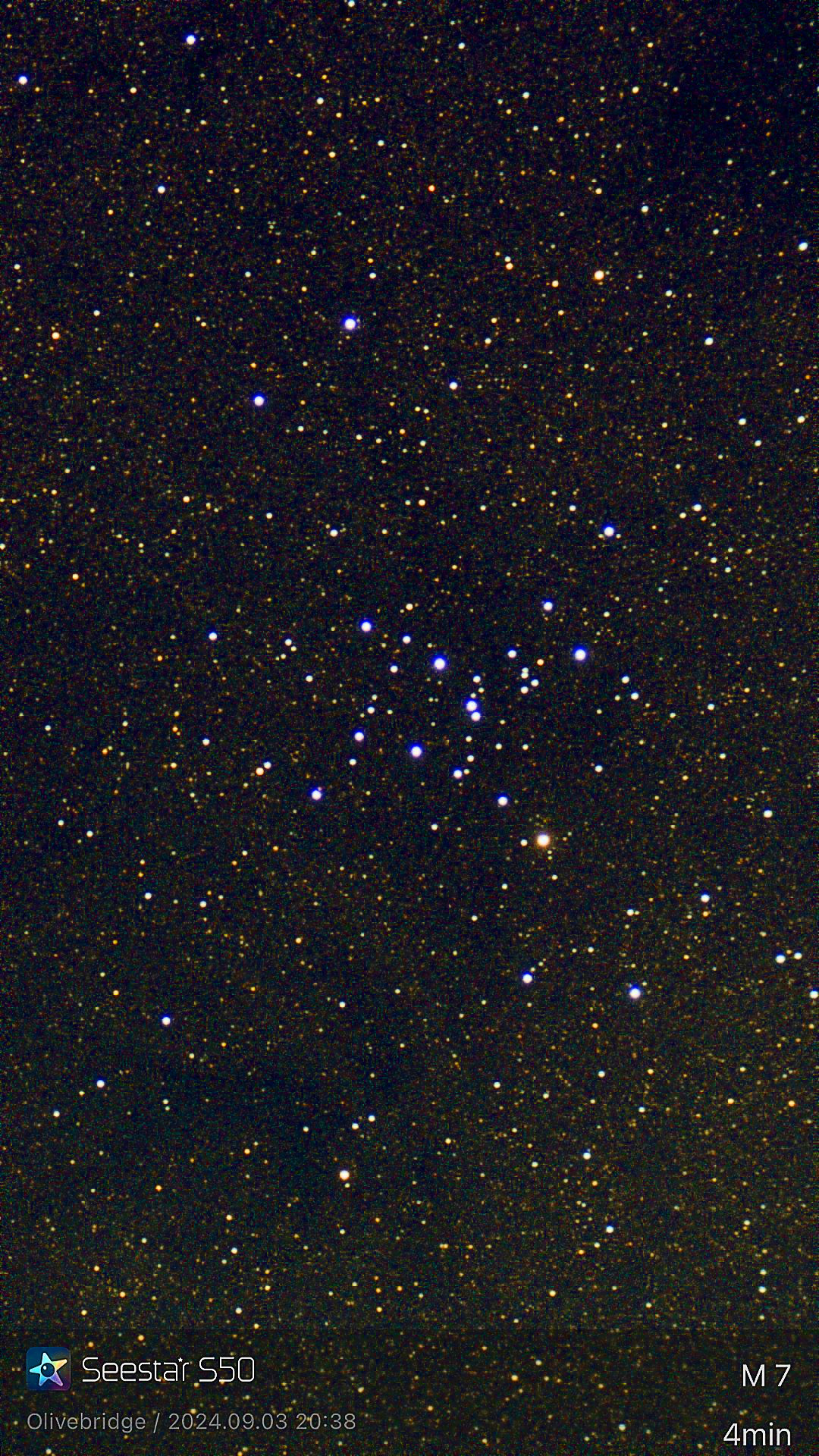| Name | Ptolemy Cluster |
| Designation(s) | M7, NGC 6475, Ptolemy Cluster |
| Object Type(s) | Open Cluster |
| Relevant Catalog(s) | All (Chron), Messier, NGC |
| Obs. Lat/Long | 41.95°, 073.19° |
| Constellation | Scorpius |
| Date and Time Observed | 2024-09-03 20:38:00 |
| Instrument | Seestar S50 f5.0-250mm FL |
| Camera | Built-in SONY IMX462 Sensor |
| Image Details | Transparency: Good. Seeing: Good. 4m total integration, exposures 10s. Darks subtracted, no flats. . |
| Description | Named for the Greek/Roman astronomer Ptolemy, who described this open cluster as a Nebula in 130 AD. Messier cataloged it on May 23, 1764, the same date as M5 through M8: "Star cluster more considerable than the preceding [M6]; this cluster appears to the naked eye like a nebulosity; it is little distant from the preceding, placed between the bow of Sagittarius & the tail of Scorpius." <--> M7 is the most southerly of all Messier objects at -34.8°. I traveled to a dark site at the Ashokan Reservoir in order to capture it (see M6) on a pretty decent night. What's fun about this object is it's located on top of the Milky Way so you see hints of the galactic center and dark nebula in the background. At my latitude, the object was already down to 12° when it became dark enough to begin imaging, and I had another half dozen targets to capture in the southern area of the sky close to the meridian. Considering only 4 minutes of integration, I think the Seestar did a decent job of capturing the background as well as the open cluster. |
| Catalog Links | |
